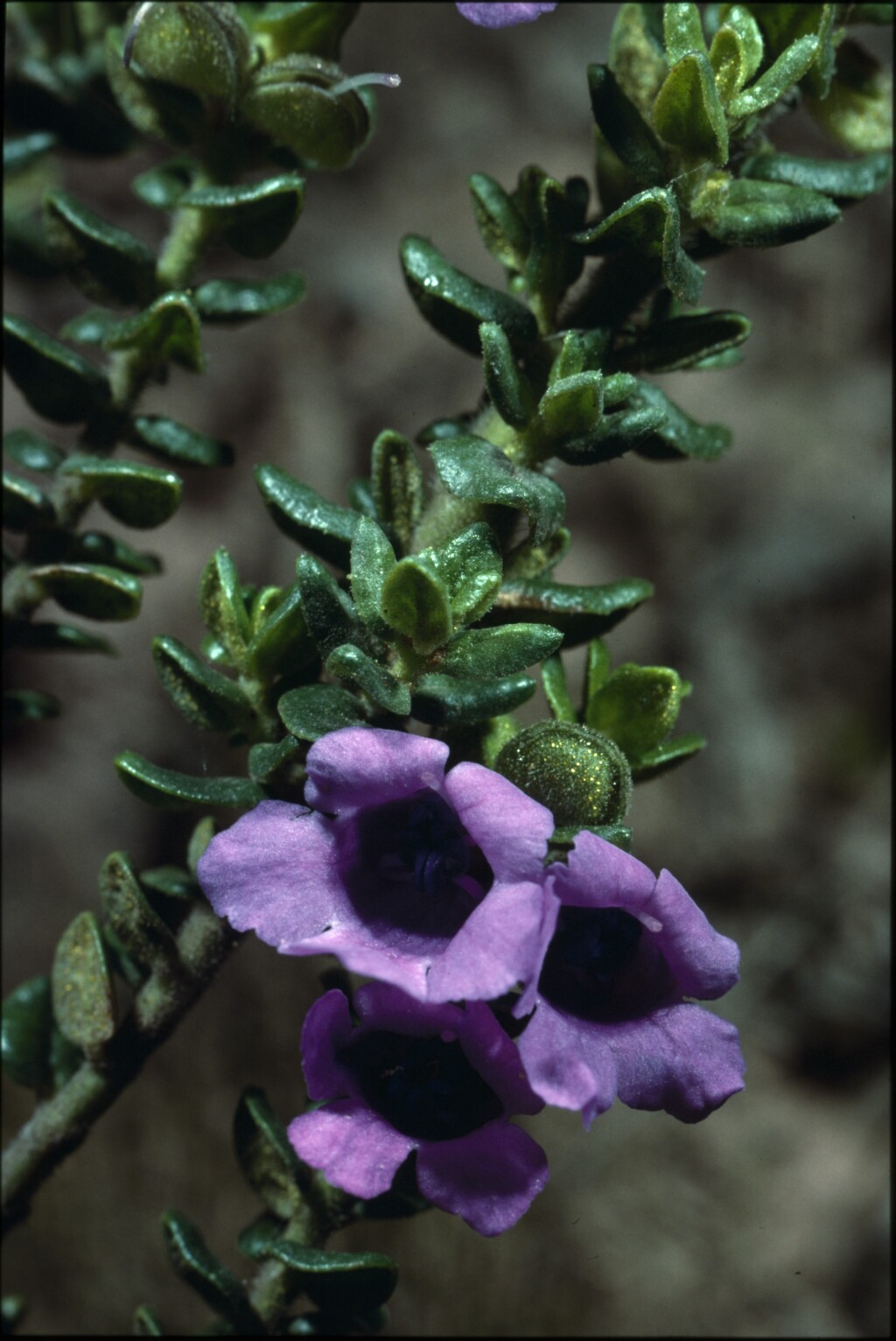Prostanthera rhombea
R.Br.Open divaricate shrub 0.5–2 m high, strongly aromatic; branches moderately to densely covered with stiff spreading hairs and gland-tipped hairs. Leaves c. orbicular or broadly cordate, usually appearing angular-ovate (rhomboid) from the variously recurved margin, 2–6 mm long, 2–5.5 mm wide, mid-green, glabrous or sparsely covered with stiff spreading hairs and gland-tipped hairs, densely covered with subsessile glands below, base broadly cuneate, rounded, truncate or cordate, margin entire, recurved, apex obtuse to rounded; petiole 0.3–1 mm long. Flowers appearing axillary; bracteoles persistent, 1.5–2 mm long, to 0.5 mm wide. Calyx 4–5 mm long, tube 1.5–2 mm long, adaxial lobe c. 2 mm long (slightly enlarged in fruit); corolla mauve or bluish, often white distally, 7–8 mm long; anther appendage absent. Flowers spring.
HSF, HNF, VAlp. Also Qld, NSW. Very localized in Victoria and known from only 3 areas: near Mt Margaret north of Licola, where growing in low heath and woodland on exposed rocky slopes, near Mt Timbertop (south east of Mansfield) in dry heathy woodland near Howqua settlement (both at c. 1000 m altitude) and at several sites on Mt Buffalo where occurring in rocky shrubland or low woodland between c. 800 and 1400 m altitude.
Plants from near Mt Margaret resemble the type (from near Sydney) in having leaves glabrous or near-glabrous on the upper surfaces. The Mt Timbertop population has leaves with coarsely hispid upper surfaces, while those from Mt Buffalo are somewhat intermediate between the others. The Mt Buffalo plants were previously regarded as an aberrant form of Prostanthera decussata from which they differ chiefly in the broader leaves and less hispid calyces.
Apparent hybrids between Prostanthera rhombea and P. hirtula are known from the Wellington River valley, near Mt Margaret.
Conn, B.J. (1999). Lamiaceae. In: Walsh, N.G.; Entwisle, T.J., Flora of Victoria Vol. 4, Cornaceae to Asteraceae, pp. 418–459. Inkata Press, Melbourne.
 Spinning
Spinning
